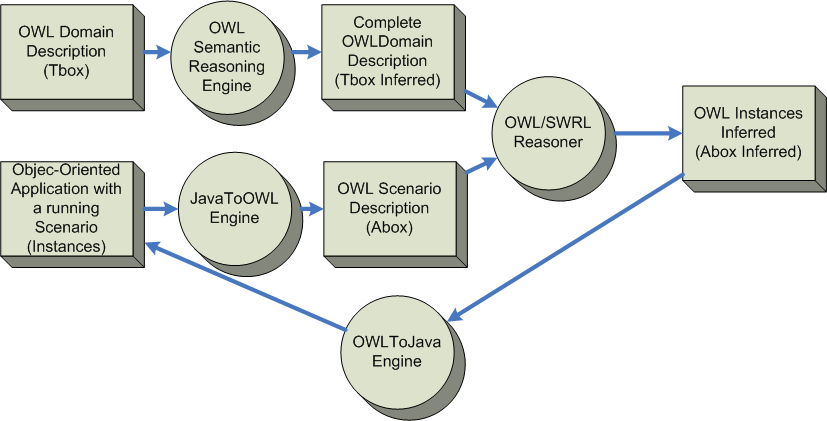JASB Ξ Java Architecture for Semantic Binding
Project Overview
» Overview
OWL reasoner engines can contribute with the semantic enrichment over ontologies. The manner in which this
knowledge is represented in OWL has been an obstacle to incorporate this semantic features in the object-oriented
paradigms. JASB architecture is intended for being a bridge to join this two different worlds. This platform
offers a connection point in which the instances of the object-oriented programming could have semantic
features provides by mean of the reasoning processes available in OWL, and in turn, OWL models can be enforced in
production Java-based system.
The architecture is composed of two clearly differenciated tools, each one is focussing on different aims.
In the logical sequence of a software development, the first tool covers the statical aspect of the inclusion of
semantic features into object-oriented application. Thus, in the following picture can be seen the architecture for the first
tool, the JASB compiler.
 Then any 3rd party tool for OWL editing or SWRL editing such as Protege
or ORE should be used to include all the semantic features and
rules into the ontology. The achieved OWL ontology is aligned with the OOP Classes, and then, the incorporation of
semantic features in the development is achieved across the following architecture:
Then any 3rd party tool for OWL editing or SWRL editing such as Protege
or ORE should be used to include all the semantic features and
rules into the ontology. The achieved OWL ontology is aligned with the OOP Classes, and then, the incorporation of
semantic features in the development is achieved across the following architecture:
 In a running object-oriented application, the instances will be converted to OWL instances and joining the instances and
the previous obtained TBox OWL description domain, the resultant ontology is inserted to the OWL semantic engines and rule
semantic engines. The new infered facts for the semantic features and rules are now enforced to the running object-oriented
instances into the client application.
In a running object-oriented application, the instances will be converted to OWL instances and joining the instances and
the previous obtained TBox OWL description domain, the resultant ontology is inserted to the OWL semantic engines and rule
semantic engines. The new infered facts for the semantic features and rules are now enforced to the running object-oriented
instances into the client application.


